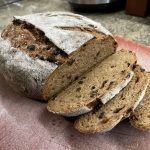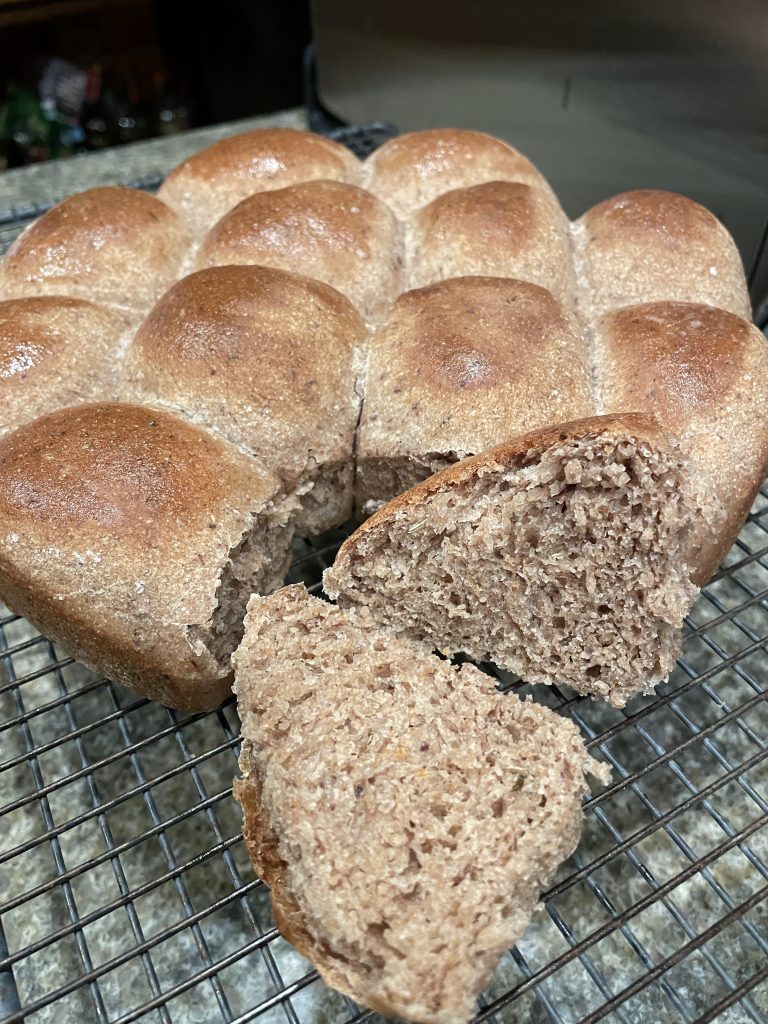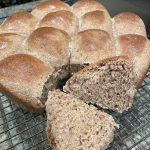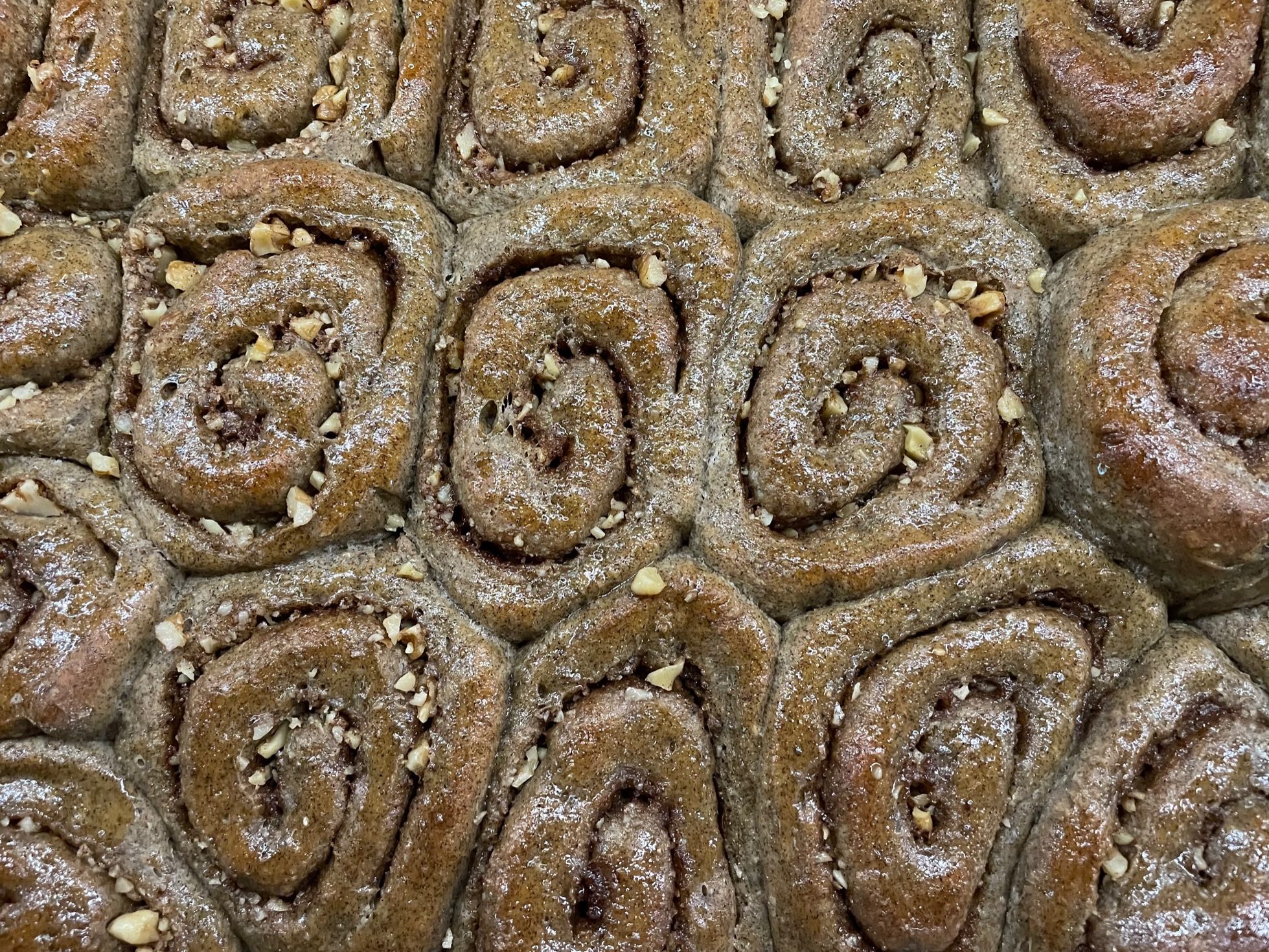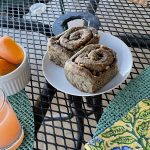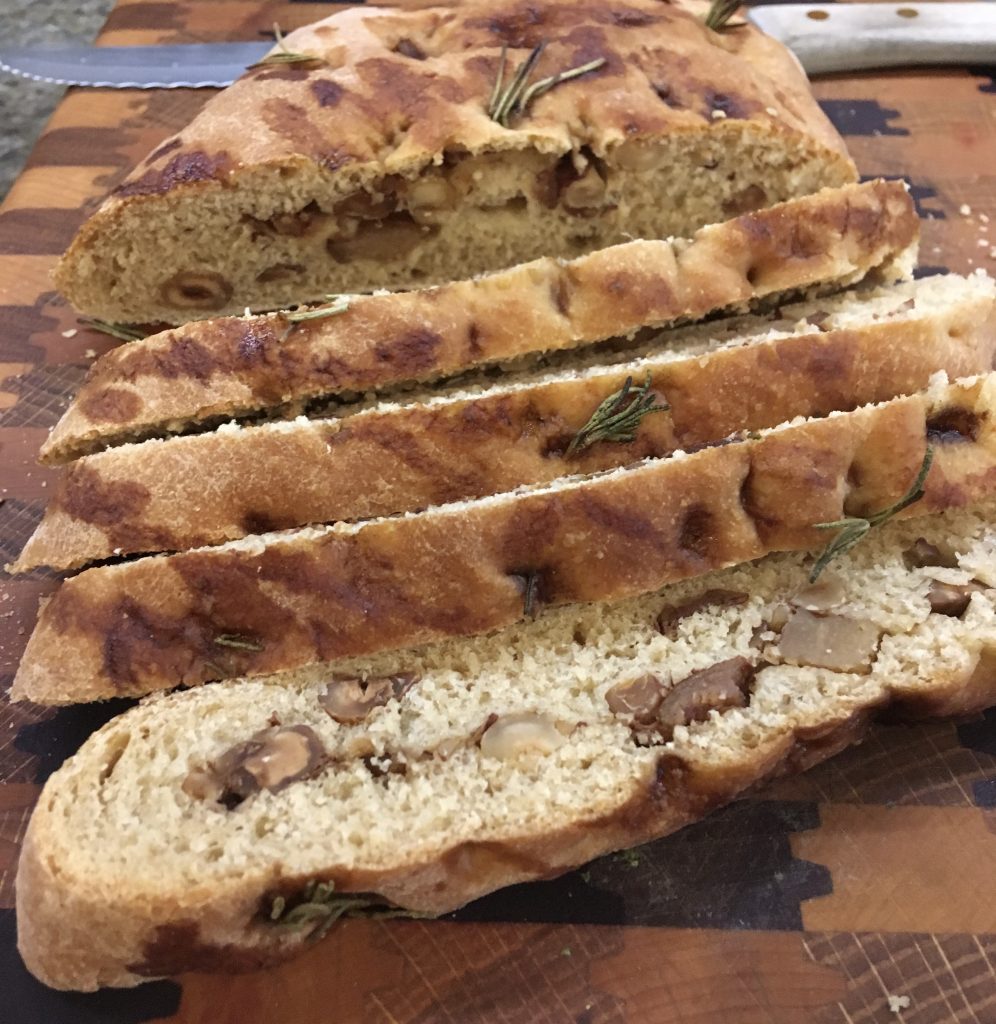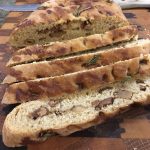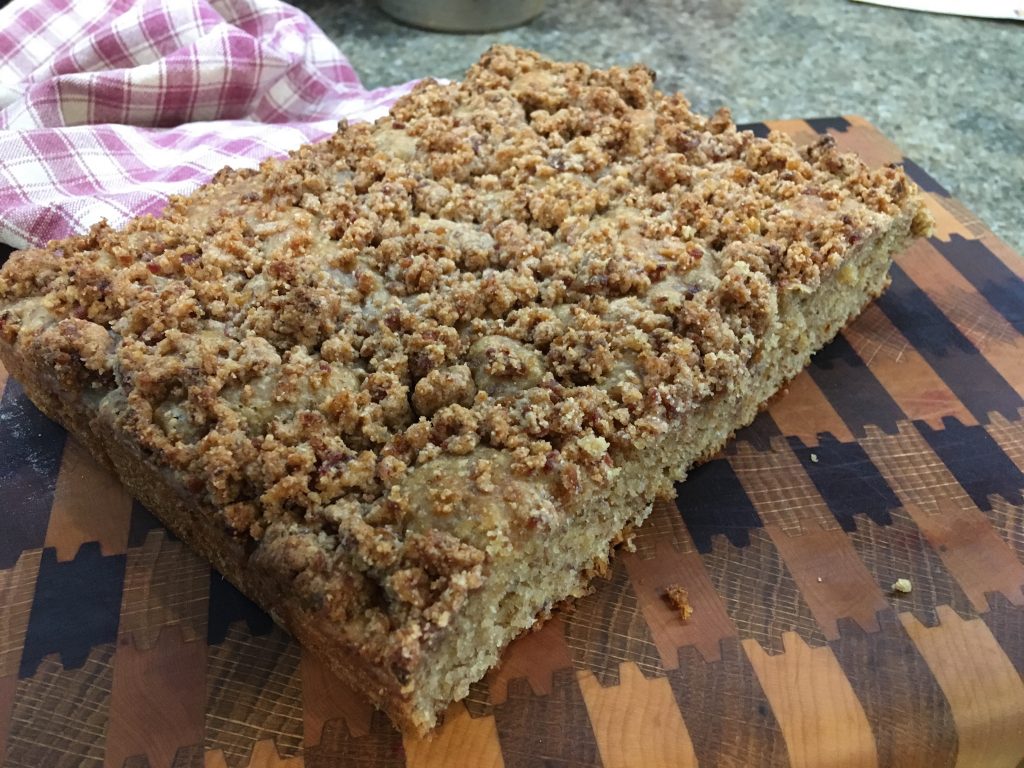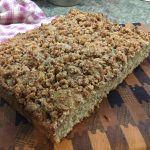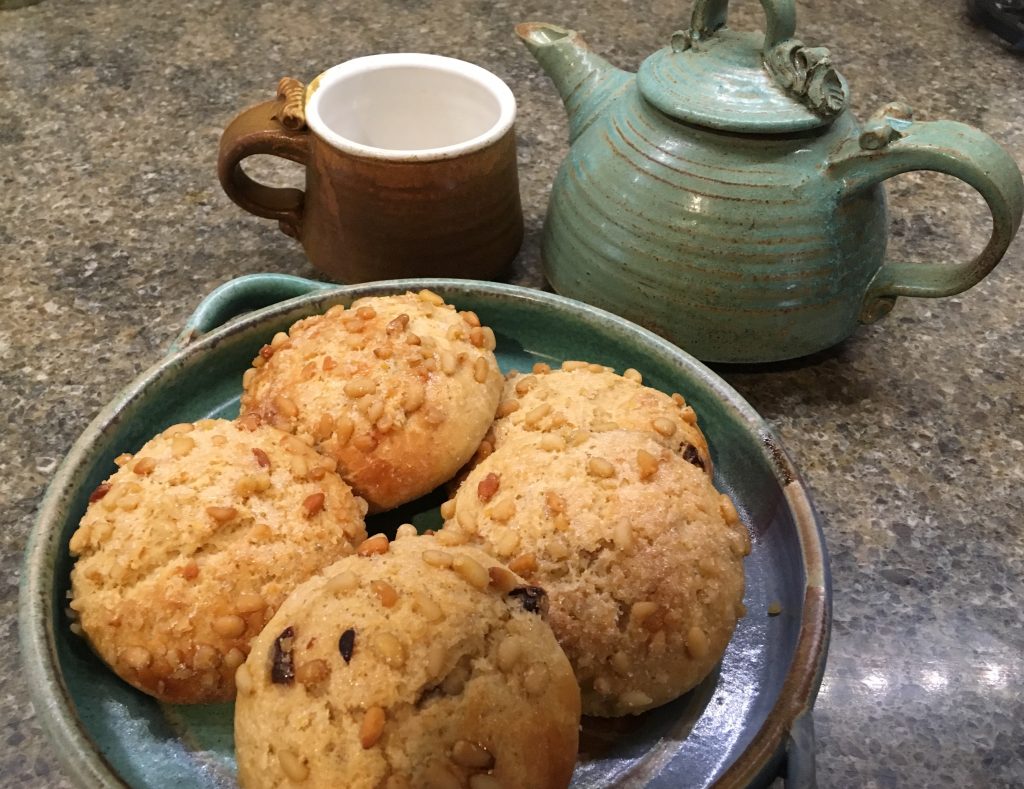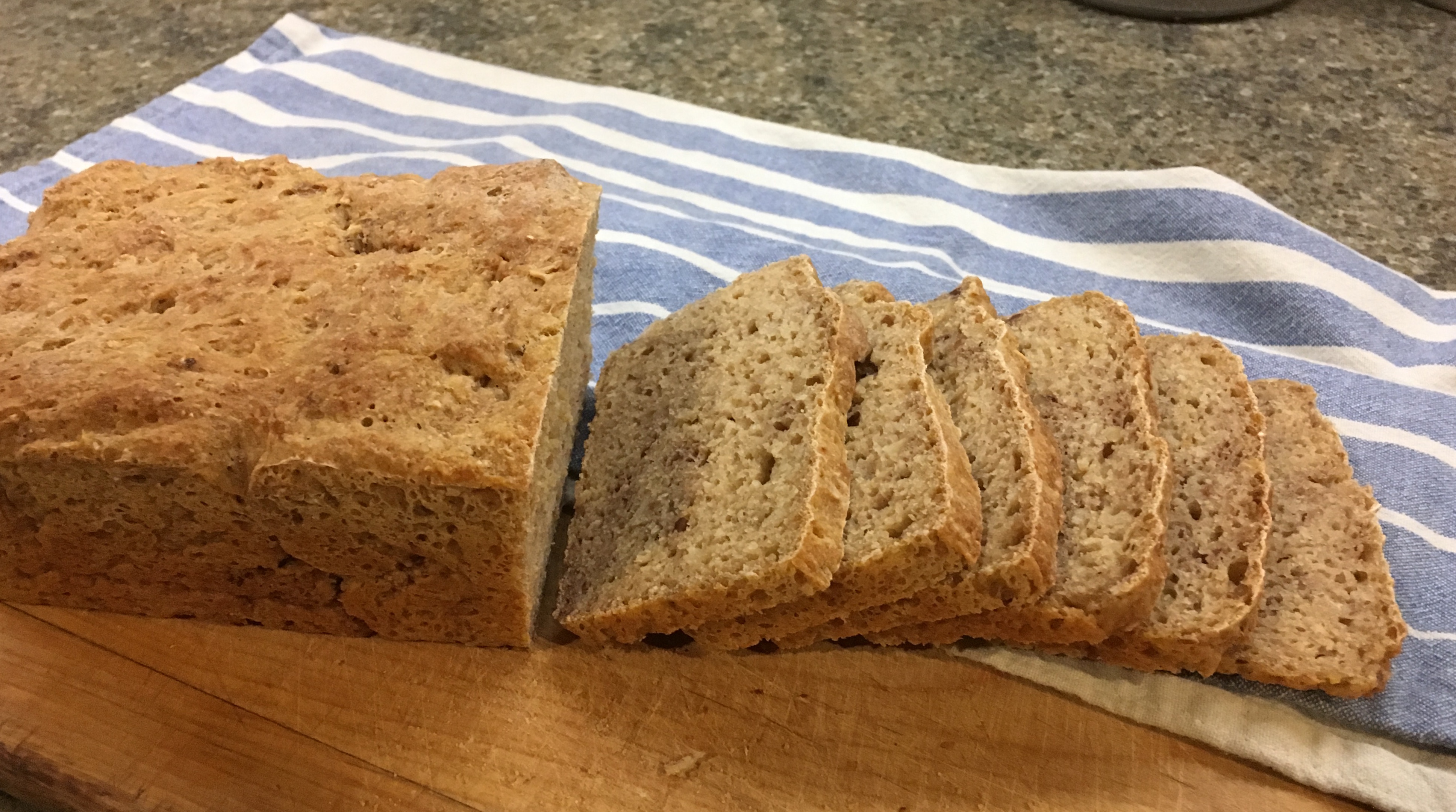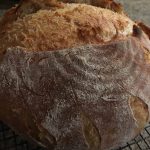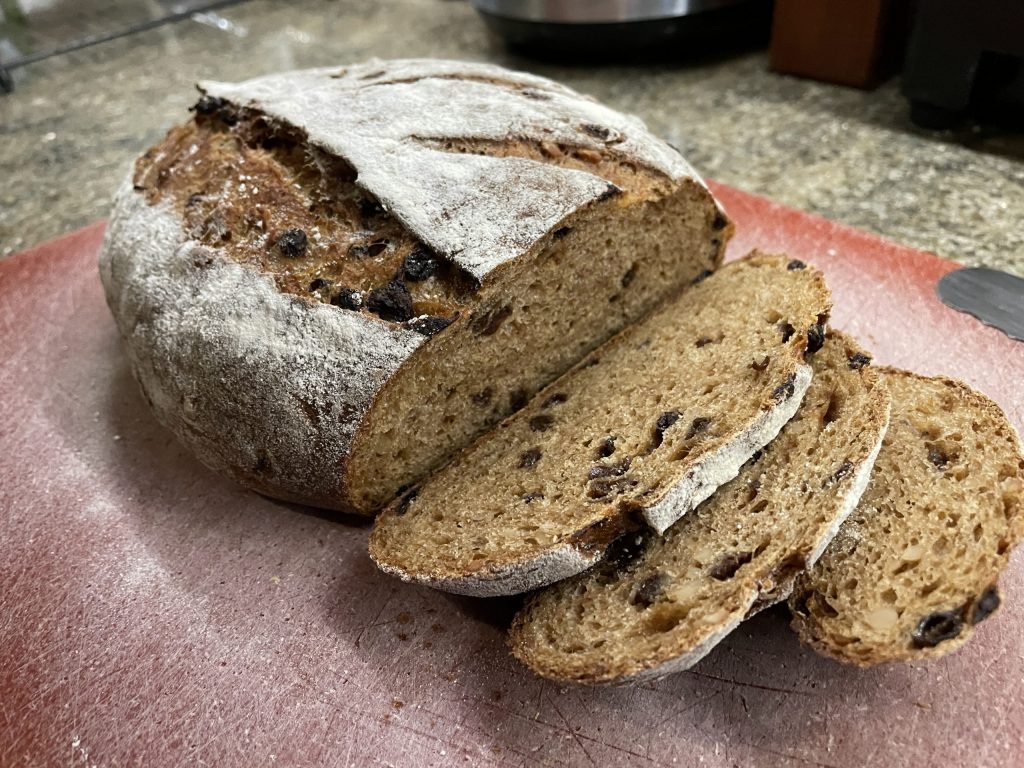
And the Great Pumpkin will rise out of the pumpkin patch…
Only to land with a thump on my kitchen counter. Yes, the annual event has come round again, the hefty orange orb awaiting my attention in the kitchen. And it’s been patient… I’m running a little late this year. However, the seeding, roasting, peeling, pureeing, draining and straining of the pumpkin has commenced, to make packages of smooth pumpkin puree for the freezer.
Fortunately, I’ve built up a few go-to recipes for using pumpkin, including the Spicy Buckwheat Pumpkin Bread, Warm Pumpkin Smoothie and Pumpkin Walnut Soup found right here on my website. And let us not forget the fall favorite pumpkin pie. But pumpkin is versatile, easily inspiring new ideas for recipes, like my Pumpkin Walnut Bread with Brandied Currants.
I loved raisin bread from the first bite taken as a child. As I’ve said in past posts, raisin bread was a treat offered at my grandmother’s house; she used sweetened hot roll mix with plentiful amounts of raisins dotting the loaf. It certainly hit the sweet spot of my youthful sweet tooth. I have come though to appreciate breads that aren’t so sweet. The currants in this loaf, along with a touch of honey, provide the primary sweetness. It’s a delicious loaf, with the depth of whole grains, the richness of ground walnuts and the warmth of pumpkin and fall baking spices. Slices of this bread make wonderful buttered toast. One of our favorite breakfasts is this toast served with several varieties of sliced cheese, toasted nuts, dates and fresh fruit. A bit like a breakfast charcuterie board.
I should probably mention that this recipe is technically not mine any longer. I entered it into the 2023 National Festival of Breads contest, where it received an honorable mention award. It is honestly one of my favorite, most frequently made recipes. Yes, it is yeast bread, with multiple steps and stages, but it is not difficult and I don’t think it will prove too challenging for most bakers. If it seems like more than you’re up for, remember, I started out with hot roll mix and raisins…
Pumpkin Walnut Bread with Brandied Raisins
Ingredients
Starter
- 1/2 cup bread flour
- 1/2 tsp Instant yeast
- 1/4 cup warm water
- 1/4 cup milk I use almond milk
Dough
- 2 cups Unbleached white flour
- 1 1/4 cups spelt or whole wheat flour
- 1 cup water
- 1 Tbsp honey
- 3/4 cup pumpkin puree
- 1 tbsp brandy
- 1 cup currants
- 1/2 tsp instant yeast
- 1 1/4 tsp salt
- 1 cup finely chopped/ground walnuts I use the food processor
- 1/4 tsp cardamom
- 1/2 tsp cinnamon
- 1/8 tsp coriander
Instructions
- Mix together all of the starter ingredients in the large mixing bowl of a stand mixer, or if mixing by hand, in a large mixing bowl. Let sit, covered, for 1 hour.
- Meanwhile stir the brandy through the currants in a small bowl and macerate while the starter rests.
- With the mixer on low, add the remaining Dough ingredients and mix well. Add in the currants. Using the dough hook knead the dough for 5 minutes, or til smooth. If mixing by hand, add and blend the dough ingredients. Remove dough to a lightly floured surface and knead until smooth. Cover and set aside to rise until double, 1 1/2 to 2 hours.
- Remove the dough and place on lightly floured surface. Shape into desired loaf shape and place on greased baking sheet to rise. Alternately, the dough can be shaped and placed in a greased loaf pan. Cover the shaped dough and let rise until double, around 1-1 /2 hours.
- Preheat the oven to 425 degrees F. Bake for 35-40 minutes, until fully risen and browned. (An instant read thermometer should read at 200 degrees F. when it is done.) Remove to a cooling rack and cool completely before slicing.
Notes
- Nutrition
- 142 calories
- Total fat: 3.7 g
Sat fat: .4 g - Cholesterol: 0 mg
- Sodium: 186 mg
- Total Carbohydrate: 25 g
Dietary fiber: 2 g
Sugars: 8 g - Protein: 4 g

